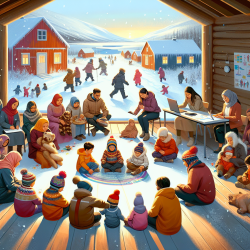Introduction
Childhood adversities are a significant public health issue, impacting long-term health and socioeconomic outcomes. A recent study titled "Profiles of childhood adversities in Inuit from Nunavik: description and associations with indicators of socioeconomic characteristics, support, and community involvement" sheds light on the prevalence and impact of these adversities among the Inuit population in Nunavik.
Key Findings
The study identifies distinct profiles of adverse childhood experiences (ACEs) among Nunavimmiut, revealing that 77.6% reported experiencing at least one form of adversity. The research categorized these experiences into profiles such as low ACEs, household stressors, and multiple ACEs, which varied by age and gender. Notably, women and younger individuals reported higher incidences of adversities.
Implications for Practitioners
Understanding these profiles is crucial for practitioners aiming to provide effective support and interventions. Here are some key takeaways:
- Gender-Sensitive Approaches: Given the higher prevalence of adversities among women, gender-sensitive interventions are necessary. Practitioners should focus on creating safe spaces and tailored support for women.
- Community and Cultural Engagement: The study highlights the importance of community involvement and cultural activities in mitigating the effects of childhood adversities. Encouraging participation in cultural practices can enhance community cohesion and individual well-being.
- Intergenerational Trauma: The legacy of residential schools and systemic violence necessitates trauma-informed care. Practitioners should be aware of the historical context and its impact on current generations.
- Holistic Support Systems: Addressing childhood adversities requires a holistic approach that integrates social, economic, and psychological support. Collaboration with community organizations can enhance the effectiveness of interventions.
Encouraging Further Research
The study underscores the need for continued research into the long-term effects of childhood adversities and the development of effective interventions. Practitioners are encouraged to engage with ongoing research and contribute to the growing body of knowledge on this topic.
To read the original research paper, please follow this link: Profiles of childhood adversities in Inuit from Nunavik: description and associations with indicators of socioeconomic characteristics, support, and community involvement.










